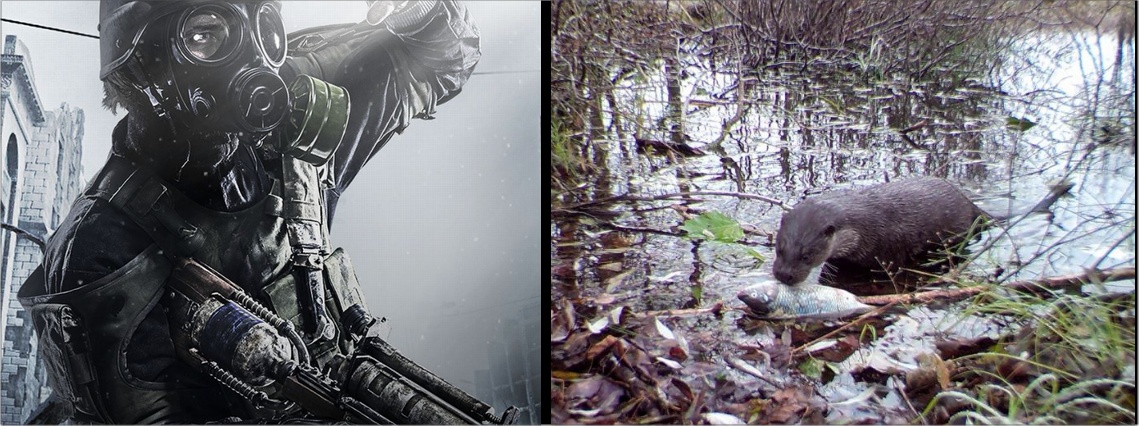Wildlife is abundant in the Chernobyl Exclusion Zone, found a month-long camera study which found 10 mammal and five bird species scavenging fish carcasses placed on the shoreline of rivers and canals there. Among the species were white-tailed eagles, American mink and river otter.
A previous study also found abundant gray wolves in this ecological zone of about 1,000 square miles that was abandoned by humans after the 1986 nuclear accident which made the name Chernobyl famous. The new results provide evidence that aquatic nutrient resources can flow to terrestrial landscapes and become available to terrestrial as well as semiaquatic wildlife, like otter and mink.
For the study, fish carcasses were placed at the edge of open waters at the Pripyat River and in nearby irrigation canals, mimicking the natural activity that occurs when currents transport dead fish carcasses to the shore. The results show that 98 percent of the fish carcasses were consumed within one week by a multitude of scavengers.

On the left, the fictional nuclear apocalypse of Dmitry Glukhovsky's Metro 2033. On the right, actual Chernobyl in 2019. Credit: Credits: THQ and the University of Georgia.
All if the carcasses were consumed by terrestrial or semi-aquatic species. The team compared scavenger activity at the river with scavenger activity at the canals, evaluating parameters including the percent of carcasses consumed and how quickly they were consumed; the number of species that showed up; and how frequently each species was detected.
The team found that scavenger efficiency was higher in the river because the limited shoreline cover increased the visibility of the fish carcasses, making them easier to find. But, as the team predicted, richness was higher in the canals


